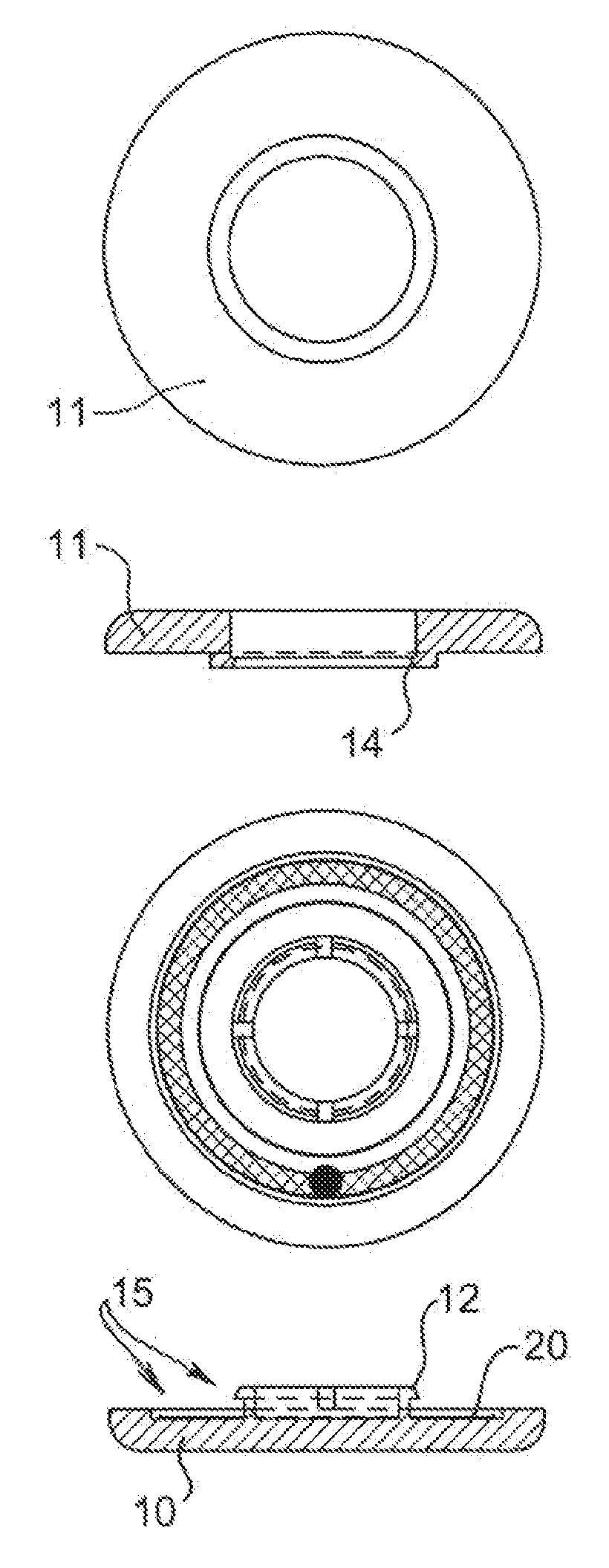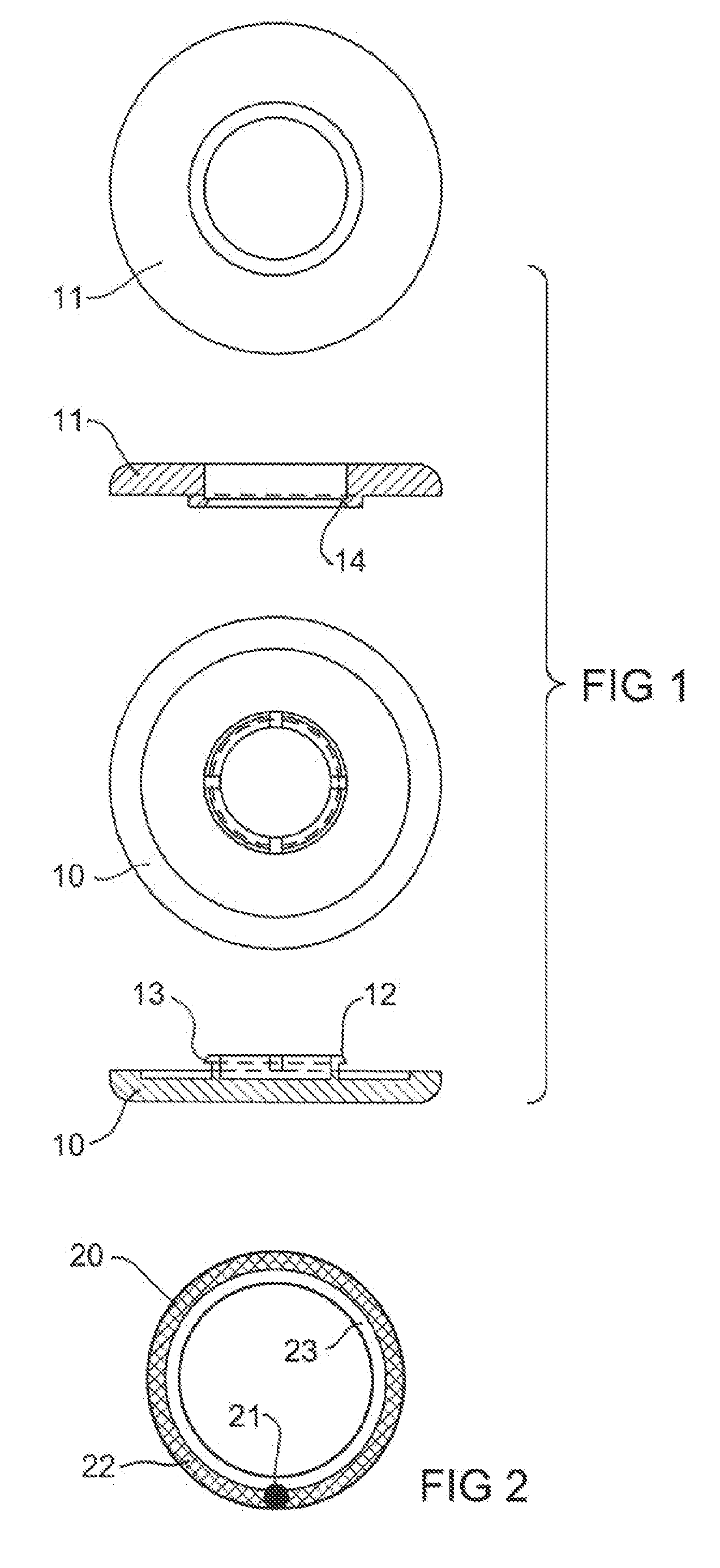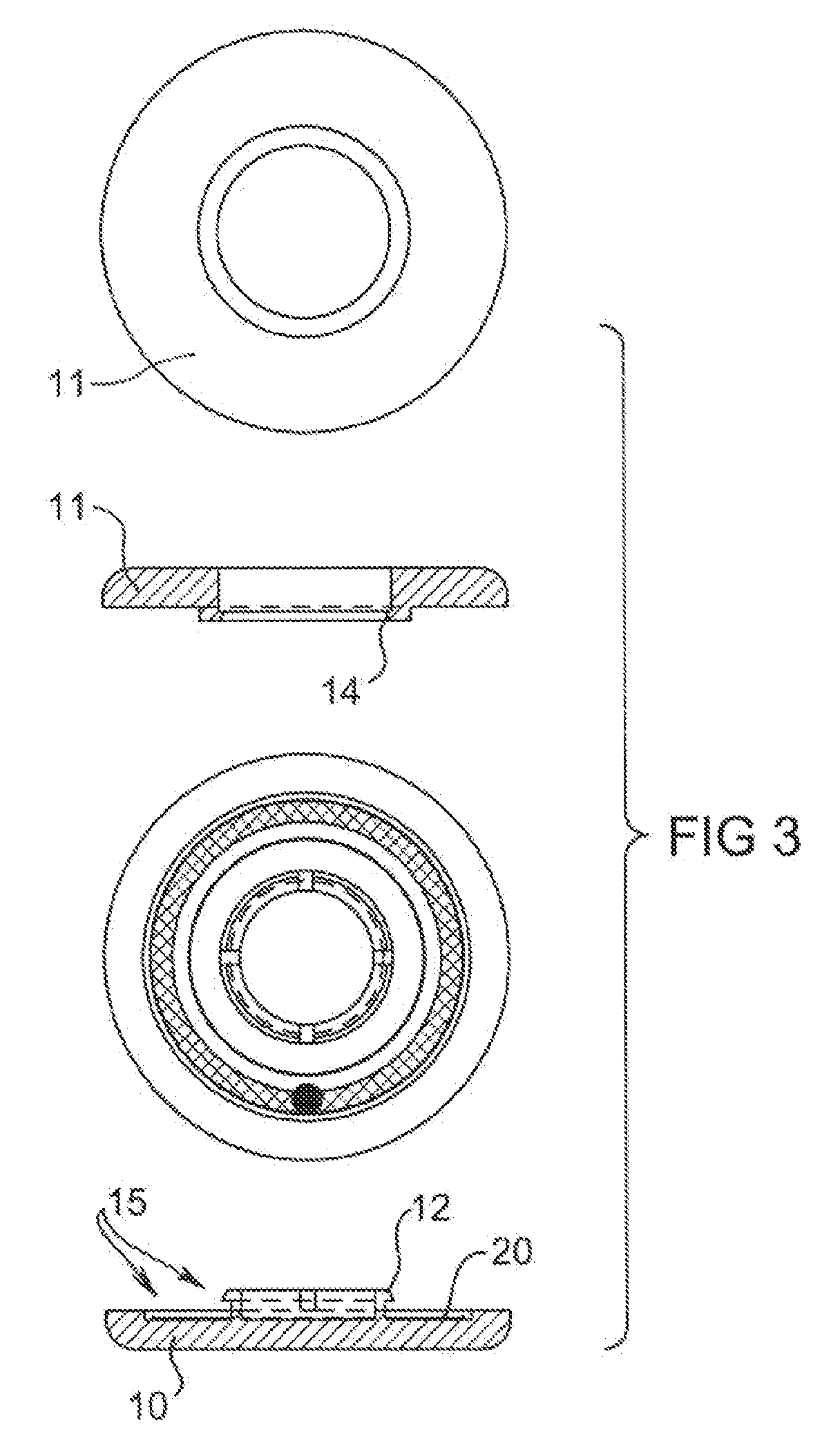RFID tag assembly and method
- Summary
- Abstract
- Description
- Claims
- Application Information
AI Technical Summary
Benefits of technology
Problems solved by technology
Method used
Image
Examples
Embodiment Construction
[0041]Referring to FIG. 1 an RFID rivet is formed in two parts, a disc part or rivet plug 10 which snap locks into a rectangular toroid part or rivet ring 11. The rivet plug 10 includes a smaller diameter raised tubular part 12 with an external barb 13 which mates to an internal barb recess 14 of a larger diameter raised tubular section of rivet ring 11 to provide a snap locking mechanism.
[0042]Referring to FIG. 2, RFID tag 20 includes a primary antenna and RFID chip 21 bonded to a conductive track 22 formed on an insulating substrate 23. Insulating substrate 23 comprises a rectangular toroid shape and may be die cut from a continuous web of complete RFID tags.
[0043]Referring to FIG. 3, RFID tag 20 is placed over the raised tubular part 12 of rivet plug 10 and into an annular recess 15 of rivet plug 10 which is on the same side as raised tubular part 12, the recess 15 having larger outside and smaller inside diameters than the corresponding diameters of RFID tag 20. RFID tag 20 has ...
PUM
| Property | Measurement | Unit |
|---|---|---|
| Thickness | aaaaa | aaaaa |
| Flexibility | aaaaa | aaaaa |
| Electrical conductor | aaaaa | aaaaa |
Abstract
Description
Claims
Application Information
 Login to View More
Login to View More - R&D
- Intellectual Property
- Life Sciences
- Materials
- Tech Scout
- Unparalleled Data Quality
- Higher Quality Content
- 60% Fewer Hallucinations
Browse by: Latest US Patents, China's latest patents, Technical Efficacy Thesaurus, Application Domain, Technology Topic, Popular Technical Reports.
© 2025 PatSnap. All rights reserved.Legal|Privacy policy|Modern Slavery Act Transparency Statement|Sitemap|About US| Contact US: help@patsnap.com



